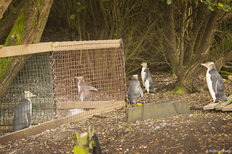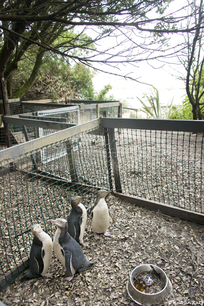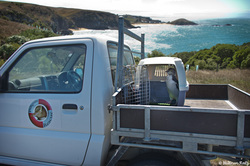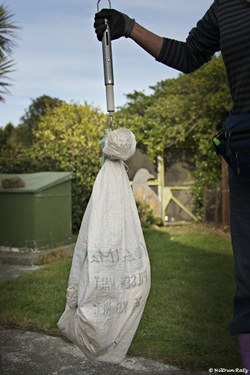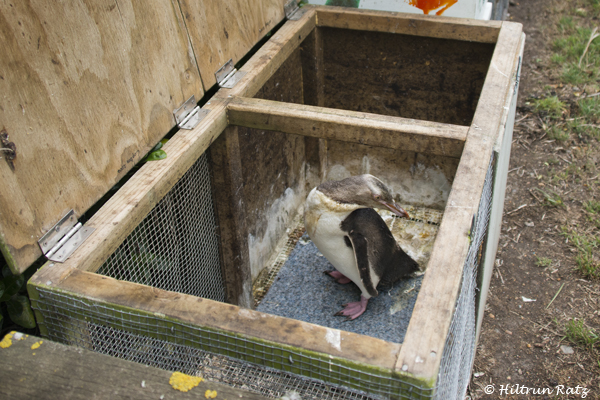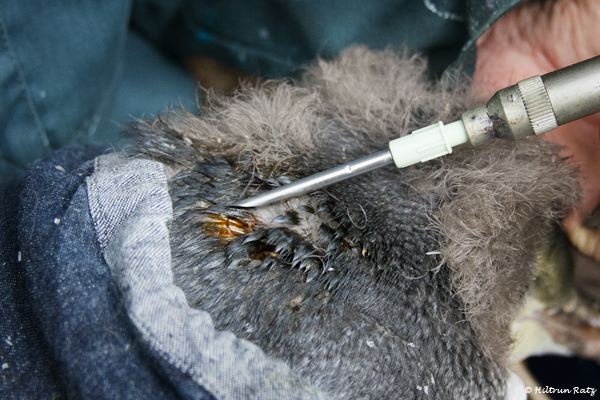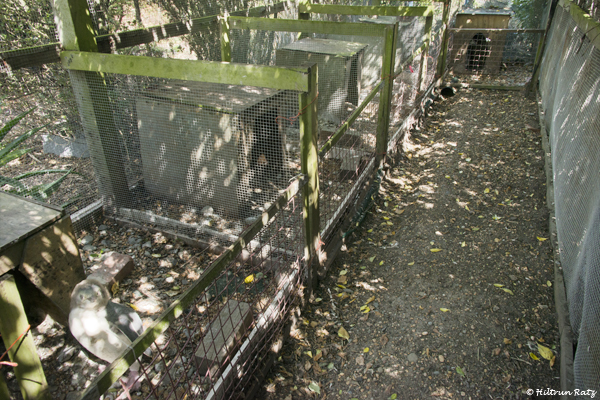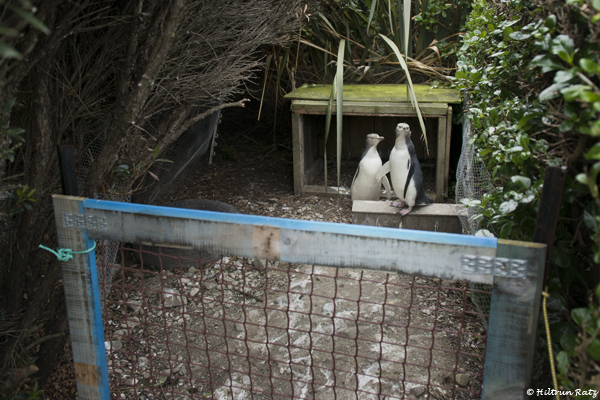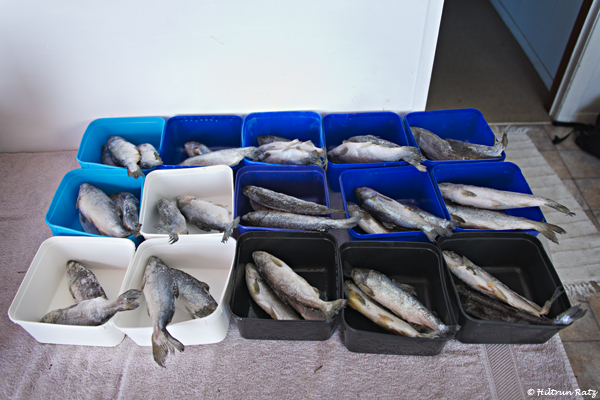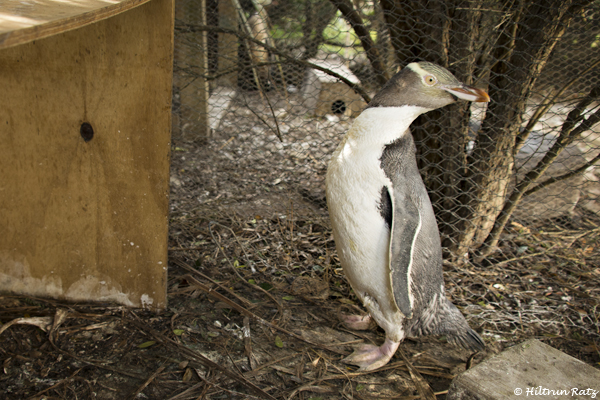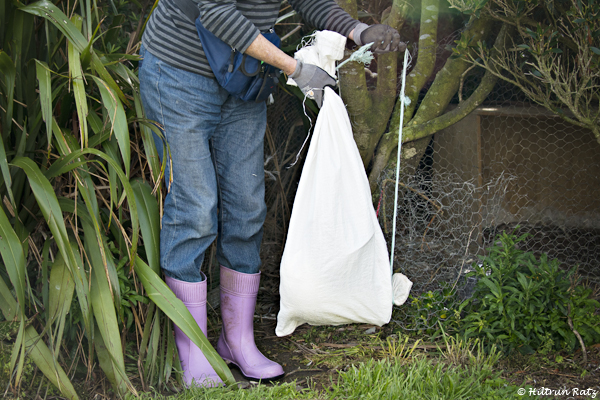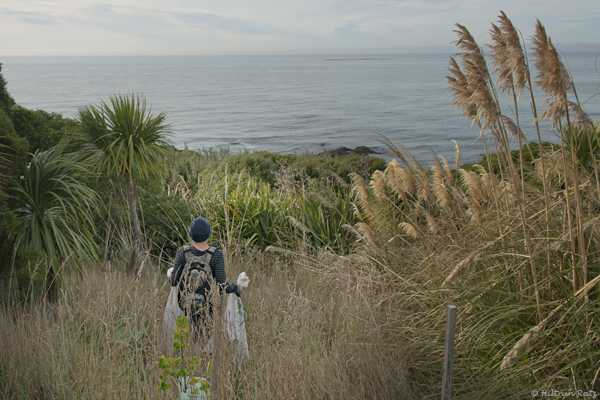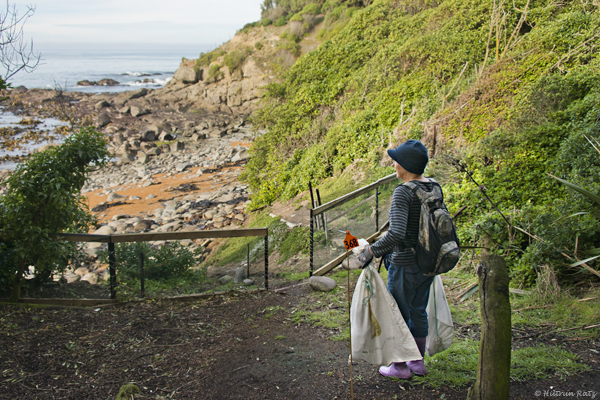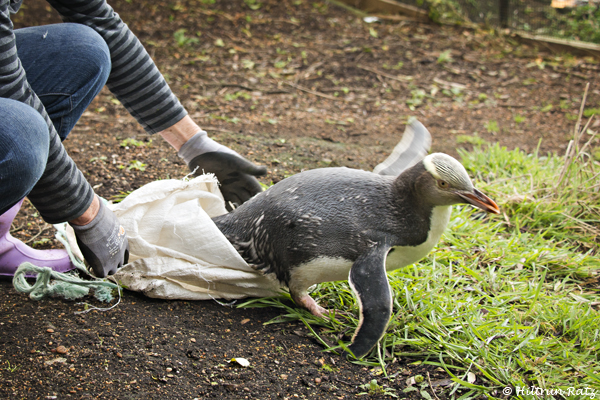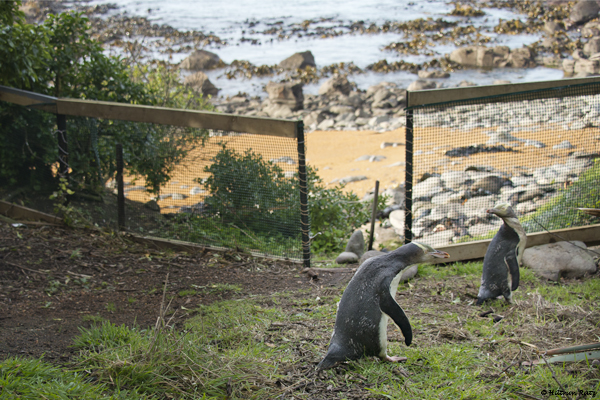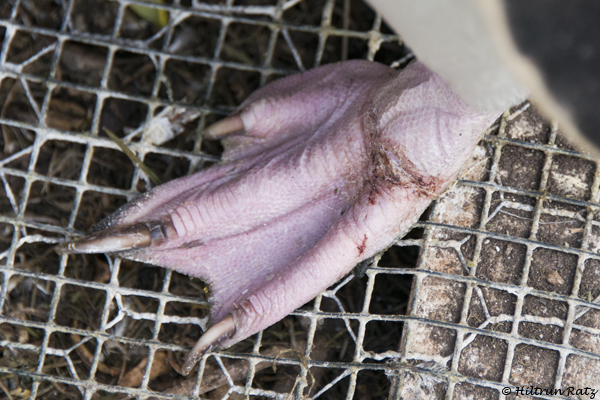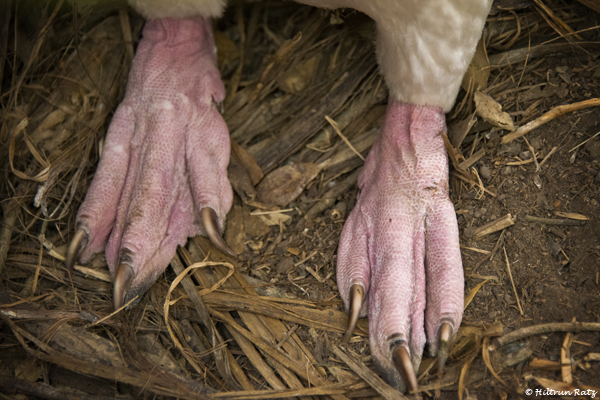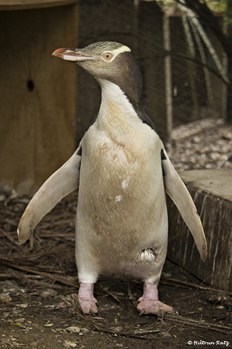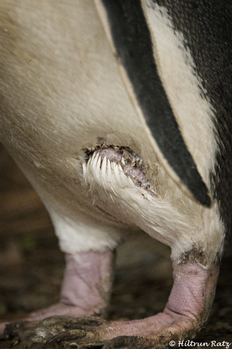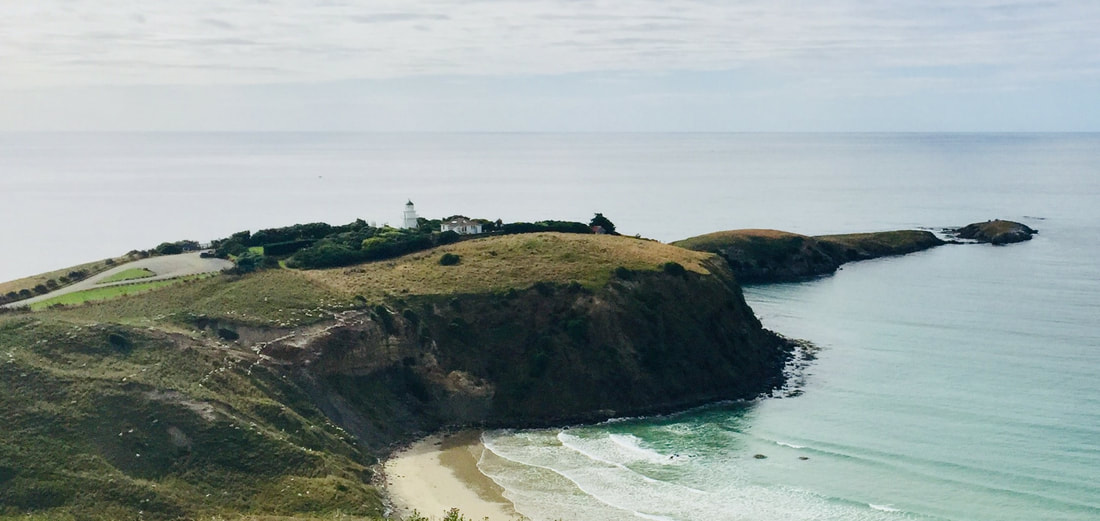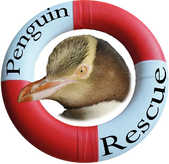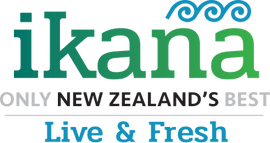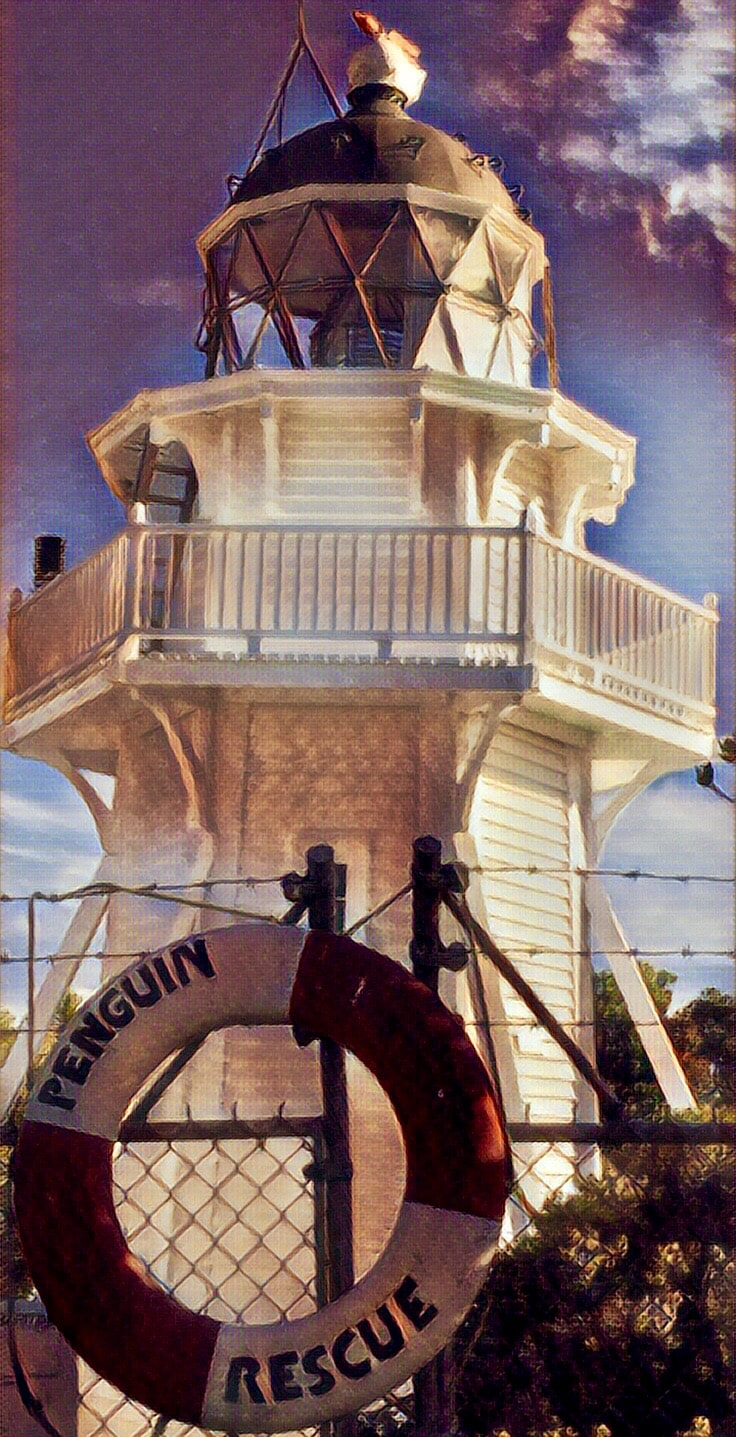Penguin Rescue Rehabilitation
|
The volunteers at the Penguin Rescue Rehabilitation facility at Katiki Point in North Otago, New Zealand, have been caring for penguins for over 20 years helping sick, injured and starving individuals to get back on their feet through intensive rehabilitation. In fact, the Yellow-eyed penguin colony at Katiki Point was founded by one of the first patients in the early 1990: Diesel Dick was a juvenile that got diesel on his feather and needed to be cleaned, hence the name. After his successful release he returned, found a devoted mate in Sweetpea and they were the first pair to settle at Katiki Point. They bred for many years producing many offspring that also returned to breed here. Many of the penguins at Katiki Point are related to these two: they are our founding couple.
Our mission is to give any penguin a chance to recover so that it can join the breeding population and reproduce and therefore help grow the penguin numbers. South Island, New Zealand has only about 900 endangered Yellow-eyed penguins in 2015 of which 20% live at Katiki Point and Okahau Point, a second colony we also monitor. Increasing survival of breeding adults through rehabilitation has a direct beneficial impact on the productivity of the colony which in turns increases recruitment of young penguins. A healthy Yellow-eyed penguin adult or juvenile weighs between 5 and 6kg. The Penguin Rescue volunteers monitor not only the breeding colonies at Katiki Point and Okahau Point throughout the year but members of the public living locally are encouraged to report any penguin found in places where it may be harmed by dogs or people. They can either ring the Department of Conservation or the Penguin Rescue phone number and a volunteer will retrieve the penguin. If it is sick, injured or starving, it will be rehabilitated and released in the breeding colony. If it does not require rehabilitation it is released in a safe penguin colony. All penguins admitted to and cared for at Penguin Rescue are examined by a vet who will prescribe the appropriate treatment. The Penguin Rescue rehabilitation facility is permitted by the Department of Conservation. Reasons for admission into the rehabilitation facility: Starvation: This can affect adults, juveniles and chicks and is the most common reason why a penguin is in rehab. For adults and juveniles there is often an underlying cause such as fungal infection in the mouth, throat, and lungs - treated with anti-fungal medication - or other infections - treated with antibiotics. Some chicks are also sick. Some parents struggle to feed their chick(s) at the end of the chick-raising period due to food shortages. These chicks are taken from the parents to relieve them and to give chicks the best possible chance of post-fledging survival. Injury: The most common injury are bites to the lower abdomen and feet by predatory fish at sea and it affects adults and juveniles. Other penguins are admitted with eye injuries or broken flippers or legs. Any penguin blinded in one eye or with broken limbs have to be euthanized as they are unable to hunt with only one eye and broken bones don't heal. Moult: Penguins moult every year and require substantial fat reserves for the enforced fast. Yellow-eyed penguins have to weigh at least 7.5kg to survive the four week fast while growing new feathers. Individuals trying to moult weighing less will die. The inability to put on enough weight may be caused by old or new injuries and/or sickness. Sequence of events from capture to release Capture: A penguin is identified to require rehabilitation either because it is obviously sick, emaciated or injured, or it is in an unsafe place where it may be hurt by dogs or humans. The penguin is captured with a towel, placed in a bag and taken to the 'penguin ambulance' that will transport it to the rehabilitation facility. Hospital box: The penguin is weighed, checked for identification (it may have a transponder or a flipper band), checked for obvious signs of injuries, given a small meal and antiparasite solution and placed in isolation. This allows the penguin to calm down and get over the stress of the journey. They will remain here for 2-3 days. Hospital wing: The penguin has been re-examined to determine the extent of the injury or sickness and if required a drug regime has been worked out with the vet. The penguin can then be transferred to the hospital wing where it has its own pen but can see and hear the neighbours. Yellow-eyed penguins are the least social of all penguins but they still recover much better when they have some company. Garden pen: These are larger than the pens in the hospital wing and 2-3 penguins are housed in each. A nest box is made available for shelter and a wooden sleeper to sit on. The penguins remain in these pen until they are fit for release. Food: The preferred food for the penguins in the rehabilitation facility is salmon smelt, about 20cm long weighing 100-150g each. The penguins are fed twice a day and about 400g of salmon each meal. This underfeeds them and usually leaves them wanting more but more is not better as the salmon is too rich to feed them more than 400g. If a penguin is no longer sick and/or on the mend for its injury it will put on 1kg per week. Alternatives to salmon is jack mackerel, silverside, or pilchards, but none work as well as salmon. Criteria for release: The penguin has to be fully recovered. Injuries have to be healed so they don't get infected. The penguin must have no sign of sickness. All Yellow-eyed penguins have to be at least 6kg on the day of release (regardless of age: adults, juveniles or chicks). Penguins that needed food through the moult have to be at least 7kg if they have not finished moulting. If they have completed the moult, they can be released weighing 6kg. Release: The penguin is collected from its pen and placed in a bag and weighed. It is then transported in the bag to a safe release site. The bag is opened and the penguin can leave. Hard-release: Resident adults are hard released at Katiki Point. They are taken out of the bag and left in the colony. No food is offered. They are resident because they have bred in a colony and will return there. If they are not from Katiki Point they will swim home. They don't get released at their colony because it would significantly increase transport time and therefore stress. Soft-release: Non-resident penguins are soft-released at Katiki Point. They are taken to a pen in the forest and are fed there every morning for one week. The pen gate is then opened and the penguin is free to go. Food is offered every morning thereafter if the penguin is still there. Using the soft-release method imprints penguins onto the area and increases the chance that they return here, maybe even to breed. The penguins in the pens also get to meet the residents that live in the area and walk past the pens every day on their way to or from sea. It is the most natural environment we can provide while they are still in care. Chicks in particular benefit from soft-release because they can come back to where they were fed. Soft-release only works if the feeding is not stressful for the penguins and they take food willingly out of the hand: it is a pleasurable experience for them and if they are starving they may return to the pens in search of food. This gives us the opportunity to recapture them for further assessment and possibly another stint in rehab. This method saves lives as some penguins need more than one go at learning how to survive in the wild. Four chicks are ready to go. They have had their last meal and the gate is left open. They didn't loose any time and were keen to head away to the big blue for the first time. The instincts are strong.
|
|
Three chicks waiting politely for their turn to be fed.
|
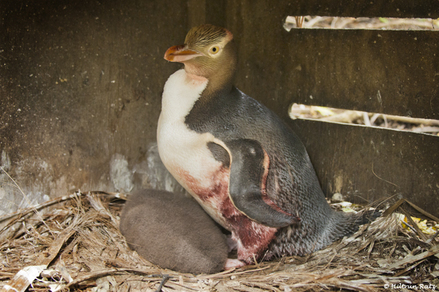 This male had a deep cut on his left flipper that required a 10 day stay in rehab. Unfortunately he was also raising a chick and his mate would not have managed without him. Removing breeding adults from their nest has consequences for the chick. In this case, the chick was young enough to be adopted to another pair who raised it.
This male had a deep cut on his left flipper that required a 10 day stay in rehab. Unfortunately he was also raising a chick and his mate would not have managed without him. Removing breeding adults from their nest has consequences for the chick. In this case, the chick was young enough to be adopted to another pair who raised it.
Reasons for rehabilitation:
Injuries:
Injuries to the feet and lower half of the body are the most common. They can be caused by marine predators such as sharks, barracouta and sea lions. They can be puncture wounds or slashes and sometimes broken legs or flippers. Any penguin with a broken bone has to be euthanized because their bones will not heal. Sometimes tendons are severed in the foot and this also cannot be healed. Some wounds cause infections that can affect the bones and this is difficult to treat and possible to heal but not always.
